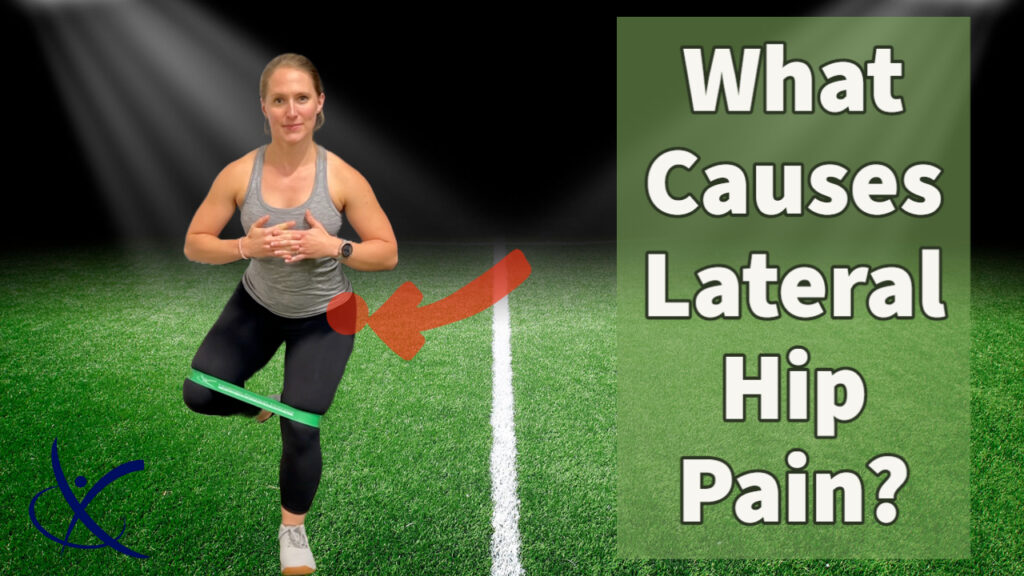Do you have pain on the outside of your hip?
Ah, the good old lateral hip pain. Many of our clients chalk it up to inflammation such as bursitis, but could it be something else?
Mark my words, not all lateral hip pain is due to an inflamed bursa. In fact, research shows that although you may have an inflamed bursa, it is not always the root cause of your pain.
Lateral hip pain is often multi-factorial. Inflammation may still play a role in your discomfort; however, it is not always the primary cause of symptoms. Bursal inflammation is often accompanied by a pathology of the gluteus medius or minimus muscles. This can include muscle tears, strains, or tendinopathy at the muscular origin or insertion. As you can see in figure 1 to the right, all three of these structures are located on or attach to the lateral hip region. So, it makes sense that your pain may not solely be related to an inflamed sac of fluid? Doesn’t it?
So, what is the best way to address lateral hip pain? Good question.
Rest isn’t always best!
When pain is thought of as inflammatory in nature, passive approaches are often taken by patients and providers. Have you been prescribed a series of steroids, anti-inflammatories, or injected with cortisone with short-term relief? Have you rested and returned to activity only to have a reoccurrence of your discomfort? (I will note, some are lucky that these methods may solve their problem; however, for many, this is not the case.)
Many researchers indicate that managing activity load and addressing the underlying weaknesses and movement deficiencies should be the first line of defense when treating lateral hip pain. It is also recommended that activities be modified to decrease compression of the structures at the lateral hip! So, here are a few thoughts to abide by when dealing with lateral hip discomfort.
Limit your time sitting cross-legged. This will decrease the tension and compression of the gluteal tendons at their insertion site at the lateral hip.
Limit your time sleeping on the affected side. Lying on the affected side will put direct pressure on the region of discomfort. To decrease the hip adduction (knees together) movement while sleeping, it is also recommended that while sleeping on the unaffected side, put a pillow in-between your knees!
Refrain from stretching the area until symptoms decrease. This means no figure 4 or IT band stretching! Although these things may provide short-term relief, they may prolong your symptoms.
Increase your stance width while standing, walking, and running. Widening your stance during these activities will help decrease the compression of structures at the lateral hip. Often, this simple change while walking or running significantly improves your tolerance to these activities!
Get strong! Rest is not always best when it comes to handling pain of any sort. If anything, rest sometimes makes things worse as your muscles lose strength over time. Making sure you implement strengthening exercises that tackle the musculature of the lateral hip is extremely important. These should include exercises focusing on hip abduction, and internal and external rotation. Your program should also include exercises that emphasize single-leg balance and stability. During exercise, it is important to remember that dealing with pain 0-4/10 is acceptable if it is not significantly worse later that evening and by the next day your discomfort is at your baseline level.
So, ladies and gents, dealing with lateral hip pain isn’t always easy or comfortable. However, rest, ice, and decreasing movement may not actually be the best solutions. When dealing with this kind of discomfort, we recommend an active approach to healing. That means, activity modification and exercise!
As always, if you have any questions or concerns regarding this blog’s information, don’t hesitate to post a question in the comment section below.
